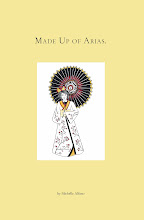The Measure of a Man:The Story of a Father, a Son and a Suit by J.J. Lee (McClelland Stewart, 2011) 293 pages
I still believe fashion matters ... because every day people get up in the morning and, with the palette of clothes they find in their closets and dressers, they attempt to create a visual poem about a part of themselves they wish to share with the world.
The Measure of a Man
This book has enormous charm for me. I remember the magic and power that my father's clothing held for me once he passed away. My mother gave his most intimate articles to my brother who was a young teenager then. I confiscated his skinny ties and dress shirts. I wore a particular white shirt (inexpensively made but precious to me) for years until it literally came apart in my hands after repeated usage and washings. I wore his skinny black tie with the tiny red diamond embossed on it for years. I still have it and hope to pass it on to my daughter. So I understand very well the spell that the clothing of a loved one casts upon you.
J.J. Lee's book was written by the close friend of
a friend of mine who grew up with Lee in Montreal. It serves as part memoir, part sartorial exploration into men's fashion; part apprentice's tale. All three aspects of the book are intriguing, affecting, often beautifully written.
Raised in Quebec, Lee enters into a discussion of men's fashion through his memories of his complex father, also named John, once a charismatic, dapper and sometimes volatile businessman in the restaurant industry. Much of Lee's fascination with men's attire seems to originate with his interest in, and memories of, his father's attire and with the construction of masculinity and masculine style. Lee approaches writing about clothing in a sensual way - the fabric, the buttons, the lapels of a suit, the knotting of a tie, a pleat, a vent - the descriptions reach a level of sensuality that might not appeal to all readers but it certainly appealed to me.
Lee has written about fashion for years as the menswear columnist for the
Vancouver Sun and a weekly fashion column for CBC Radio in Vancouver. He served for a time as a apprentice in a tailor's shop under the tutelage of the septuagenarian Bill Wong, a veteran Vancouver tailor.
As Lee recounts his life, you see that it is part of a complicated emotional history that saw the artistically talented Lee drop out of school, live a near derelict existence in the
Gastown section of Vancouver, sometimes suicidal and certainly desperate, obtain a Masters in architecture and eventually achieve some stability as a news reporter, columnist and father.
Lee elaborates the history of the suit while trying to physically remake his father's own suit when he worked as an apprentice. As he literally tears apart and reassembles the suit, the memories start to flow, and the troubled past of the elder Lee is summoned up.
It's not pretty; in fact, it is often harrowing: the domestic violence, the drinking, his father's affairs, his on-going economic woes and the numerous, literal, car crashes. These episodes underlie, I think, what appears to be the author's emotional fragility and his conflicted feelings about masculinity. And, throughout, one sees that the elder Lee's sartorial style, its ascendancy or decline, often reflected his economic and psychological state. Not surprisingly, prosperity and well being = attention to fashion and one's person. Psychological chaos and economic disorder = more slovenly behavior and attire.
Lee also unravels for the novice intriguing bits of menswear history in minutia: the tie points down to specific part of the male anatomy (I never thought of it that way!); the types of dots on Churchill's tie (
Lipton dots); the origin of the suit (thank you medieval armor and the court of
King Charles II); the origin of the fashion term
"Macaroni" (in mid-18th century England, a fashionable fellow who dressed in an outlandishly "affected" manner) and general
dandyism through the ages.
Male fashion icons are scrutinized, their styles analyzed and revered including the usual suspects:
Beau Brummel, Oscar Wilde, the Duke of Windsor but other historical tidbits about fashion tantalize too: the
sans-culottes of the French Revolution, the
"Peacock Revolution" of the 1960s London, the attire of the Japanese corporate
"Salaryman".
One reviewer described the book as navel gazing but I find that description a cheap put down as well as insensitive. The memories involving Lee's father are often disturbing, truly frightening but told simply, almost gently, as if to absolve his father of full blame for his reprehensible actions. How do you forgive a parent if you don't understand him? How best to do this if not figuratively, or literally, walking in his shoes or assuming his own attire?
 |
| J.J. Lee |











3 comments:
He looks very dapper!
p.s. "Turkey Trotter" is me, Cheryl.
I didn't mean to, I got carried away!
There you are Cheryl! :)
Post a Comment